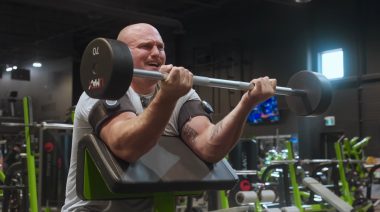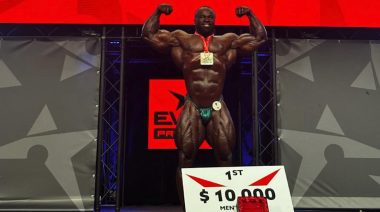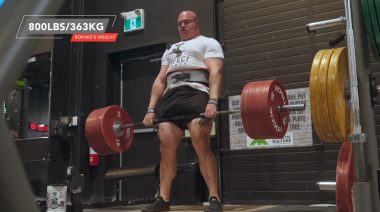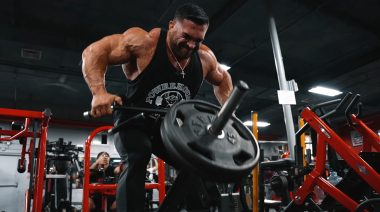For many, bodybuilding workouts are a gateway into the world of strength training. People who want to build muscle, get lean, and look good often start by aspiring to look like the massive bodybuilder on the cover of a muscle magazine. Probably the same magazine where they found their current training routine. It makes sense; why wouldn’t someone want to follow a program written by someone who looks like that?
The problem with taking a program straight from a magazine is that they often fail to integrate details on fundamental human movements, proper mobility, and self-care. While building muscle mass should be one of the primary goals when lifting weights, you can’t ignore performance, longevity, and overall health. Improving joint mobility, flexibility, power development, and athleticism all have a place in a bodybuilder’s program.
Bodybuilding should really be about creating a more resilient, strong, and muscular body for the long haul.
Bodybuilding is about having bigger muscles, but it’s also about improving your overall health and fitness.
Bodybuilding as a Foundation of Overall Fitness
Anyone looking to improve their physique could be called a bodybuilder. The stereotype that all bodybuilders are meatheads that perform body part splits, eat chicken and broccoli, and stay tan year round is untrue and unfair. Bodybuilding is more than that.
If you are looking to build muscle, lose body fat, move better, and stay healthy, you need to start by constructing a base of strength. Outlined below are the elements of my New Age Bodybuilding template. Integrating these concepts into your program will not only help you build muscle, but also form a foundation to stay lifting for years. If you are new to lifting and looking for a way to improve your body, start here. For the advanced lifter, it never hurts to go back to the fundamentals.
Bodybuilding Foundation: Warm Up, Correctives, and Movement Prep
The following corrective exercises can be done at home, on an off day, or before a workout.
Active Straight Leg Raise: Leg lowering progressions help improve the hip hinge. This is also a great drill to improve mobility.
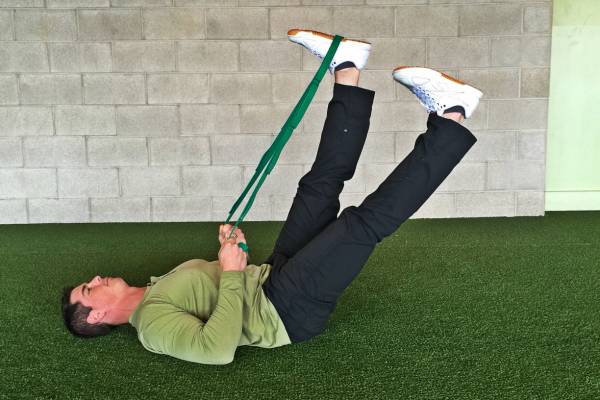
- Lie flat on your back.
- Using a strap or a band, bring your right leg up to the beginning of the stretch and hold for a few seconds while keeping your left leg straight and flat.
- Raise your left leg, keeping it straight as possible while raising it even with the right leg. Repeat 10 times.
- If the right leg loosens a bit, then increase the stretch, but the left leg needs to return to the ground straight and flat (calf touching before the heel without any turnout) on every rep.
- Switch legs and repeat.
Take your time with this drill. Keep in mind that this is not a hamstring stretch, but rather an alternating pattern of hip flexion and extension. Both legs are equally important and it also has a core-strengthening component if done properly.
Couch Stretch: This is an excellent hip flexor stretch to improve hip mobility.
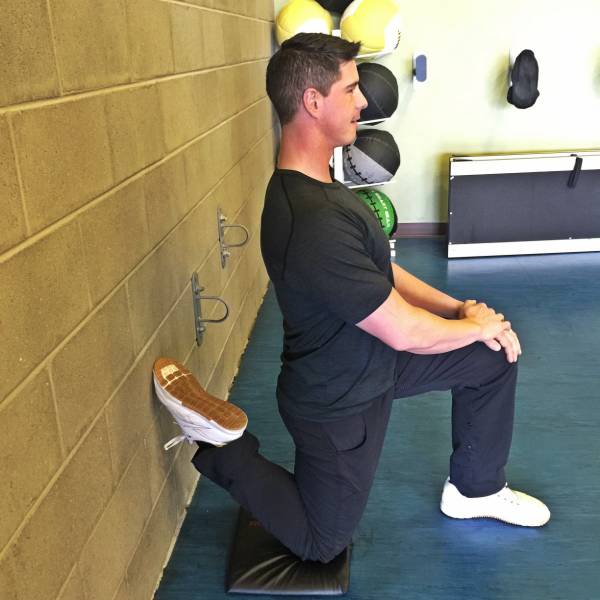
- Grab a pad or other soft surface for your knee.
- Start with your back to the wall.
- Put one knee on a soft surface and bend it back until you have your foot up against the wall. The other knee should be bent in front of you at 90 degrees.
- Maintain an upright posture at all times.
- Hold for 30-60 seconds and repeat on the other side.
McGill Sit Up: The McGill sit up will strengthen your core and protect your back.
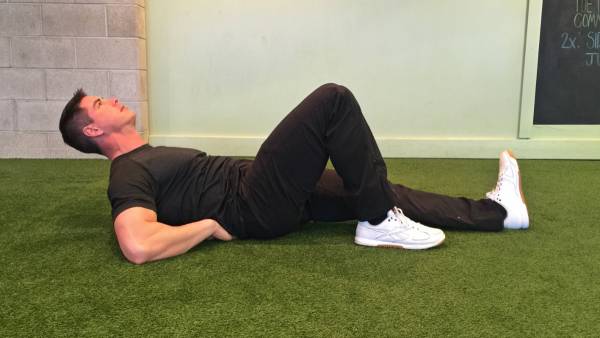
- Lie on your back with your left leg straight on the floor. Your right knee should be bent with your foot flat on the floor.
- Place your hands palms down on the floor underneath the natural arch in your lower back. Don’t flatten your back.
- Slowly raise your head and shoulders off the floor without bending your lower back or spine, and hold this position for 7-8 seconds, breathing deep the entire time. That’s one repetition.
- Perform 4-5 reps, rest for 30-60 seconds, and then switch legs so that your right leg is straight and your left is bent. Repeat for a total of two rounds per side.
- For an added challenge, raise your elbows off the floor as you curl up. And for an even greater challenge, contract your abs before you initiate the movement, and then curl up against that force.
Other corrective exercises:
- Rib pull or Brettzel stretch for overhead movements (5-10 deep breathes per side)
- Bird dog for core development and lumbar spine protection (3 sets of 5 reps per side)
- Glute bridge and hip lift progressions to improve posterior chain and open up anterior chain (3-5 sets of 10-second holds)
In addition to these corrective exercises, spend 5-10 minutes before each workout focused on original strength reset drills like breathing exercises, head nods, rolling, rocking, crawling, and getting up and down off the ground. Perform 10-20 reps per movement depending on the time that you have.
Finally, before you begin your workout spend 5-10 minutes on the following movement preparations:
- Arm-bars: 1-2 sets of 30-60 second holds each side
- KB Halo: 10 reps each direction
- Prying goblet squat and Cossack squats: 5 reps each side
- Lunge matrix (forward, lateral, rotational): 5 reps each side
- Plyometrics or jump rope: 2 sets of 5 reps for plyometrics and 2-5 minutes for jump rope
Bodybuilding Foundation: Strength Training Progressions
The following is a list of progressions that will prepare your body for more traditional bodybuilding exercises. These movements will ensure that you have the foundational strength and baseline movement ability to train safely and effectively.
- Turkish get up progressions: Unloaded, loaded, half, and full get up. Make sure that form is sufficient with the half Turkish get up and the full get up before you add weight. Strive for 3-5 reps per side for each progression.
- Pull up progressions: Hangs, holds, and full reps. For hangs and holds, do 3 sets of 10-20 seconds to build positional strength. Perform straight-arm hangs first and then move to holds at the top of the rep. Once you have developed enough upper-body strength, the 5-3-2 method works well to train full pull ups. Inverted rows are a good substitute if your overhead mobility is not sufficient.
- Squats: Goblet squat, front squat, single leg, or pistol: Once a proper goblet squat can be performed with 16-24kg for 5 reps, the double kettlebell front squat and barbell front squat can be introduced. For the single leg squat, use a bench or medicine ball for a tactile cue to manage the depth of you squat. Once you can perform 3-5 reps above parallel, progress to a full pistol squat. Start with 2-5 sets of 3-5 reps.
- Pushing exercises: If you can hold a push up plank for at least 30 seconds, move to full push ups. Once you can perform 15 push ups, progress to dumbbell bench press or kettlebell floor press for 3-5 sets of 5 reps. If your overhead mobility is not a concern, utilize the kettlebell overhead press for 3-5 sets of 3-5 reps.
- Hinge progressions: Once you can perform a correct kettlebell deadlift, move on to the kettlebell swing. Progress to barbell deadlifts only after you are comfortable with the hip hinge movement pattern. The single-leg kettlebell deadlift is an effective exercise to reduce asymmetries and help strengthen the hinge pattern.
- Loaded carries: Farmers carries, suitcase carries, single-arm rack carries, and if overhead mobility is sufficient, the single-arm overhead carry should be utilized in your program.
For efficiency, pair the following exercises:
- Get up progressions and loaded carries
- Hinge and upper-body pushing exercises
- Squats and pull up progressions
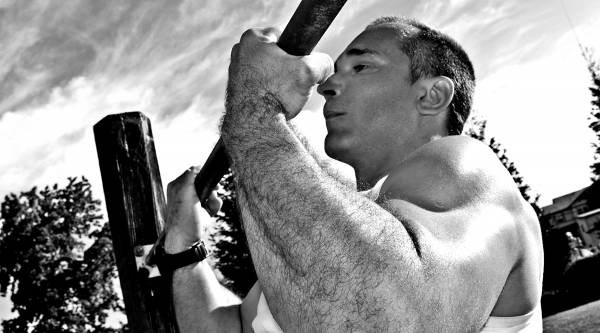
If you can’t do pull ups right away, start with hangs and holds until you develop positional strength and stability.
Bodybuilding Foundation: Performance Standards for Beginners
Most athletes want to jump right into the highest standard possible and forget about establishing a sound base. This can lead to burnout or injury. The standards below will help guide you toward the choosing the proper progression:
- Farmers Carry: 75% of bodyweight (combined weight in each hand) for 60-90 seconds.
- Kettlebell Swings: 100 two-handed swings in less than 5 minutes. Women should use a 16kg bell while men should use a 24kg bell.
- Turkish get ups: 5 reps on each side with the same size bells used for the swing.
- Push ups: 3 sets of 10+ for women, 15+ for men.
- Chin up/pull up holds: 30 seconds for women and 45 seconds for men. Once this is established, women should shoot for 2 sets of 1 rep and men should aim for 2 sets of 5 reps.
- Squats: Once 5 perfect reps can be done with a 16kg bell for women and a 24kg bell for men, progress to the double-kettlebell front squat and eventually the barbell front squat. Progress slowly.
Once you meet these standards, you can start to add traditional bodybuilding exercises, such as bicep curls, triceps extensions, and dumbbell lateral raises to round out your program.
Bodybuilding Foundation: Conditioning
Having a solid conditioning base is important for a beginning bodybuilder to promote general physical preparedness, work capacity, and fat loss. Your conditioning program should focus on improving ballistic movement patterns (e.g., the kettlebell swing) and utilize movements that stimulate a metabolic effect without beating you up. Keep in mind that conditioning should not be done haphazardly or to excess. Below are three conditioning workouts that are hard enough to produce results, but approachable for a beginner.
- 100 kettlebell swings done in sets of 10-20 reps. Record your time to track progression.
- 2,000 meter row. You can cut the distance in half if 2,000 meters is too much. Alternatively, feel free to add distance, but cap it at 3,000 meters. Record your time to track progression.
- Assault/Airdyne bike intervals: 6 sets of 30-seconds on, 30-seconds off.
Bodybuilding Foundation: Foam Rolling for Recovery
Foam rolling is a technique that is often utilized incorrectly. Most people assume that it helps enhance increased mobility before workouts. However, it is best performed after workouts as a recovery method for these reasons:
- Your body experiences a significant level of local inflammation and delayed onset muscle soreness (DOMS) after a tough workout. Targeting soft tissue helps reduce this soreness and improve recovery.
- Foam rolling post workout helps clear out inflammation and lymphatic pooling, aiding in recovery by reducing local tone of the tissues.
- It helps drive blood into local areas, helping to clear out waste.
After each workout, foam roll the following areas for at least 5 minutes:
- Posterior chain: calves, hamstrings, glutes, thoracic spine, lats
- Anterior chain: thighs, hips, inner thighs, pecs
A Base for Bodybuilding Longevity
Don’t be afraid to go against the norm in the sport of bodybuilding. Without a proper foundation of movement and a roadmap of progression to follow, you may find yourself hitting a plateau, or even worse, dealing with an injury. Bulking up your traditional bodybuilding workouts with corrective exercises, warm ups, body resets, strength training progressions, conditioning, and recovery will provide your body with a better base to keep building muscle for the long-haul.
More on the Why and How of Bodybuilding:
- Lift Stuff: Add Mass to Your Body and Years to Your Life
- 4 Reasons Bodybuilding Is Important for Weightlifting
- Super Sets: What They Are and 4 Ways to Do Them
- New on Breaking Muscle Today
Photos 1, 5 courtesy of Shutterstock.
Photos 2, 3, 4 courtesy of Justin Grinnell.
Photo 6 courtesy of Craig Marker.

